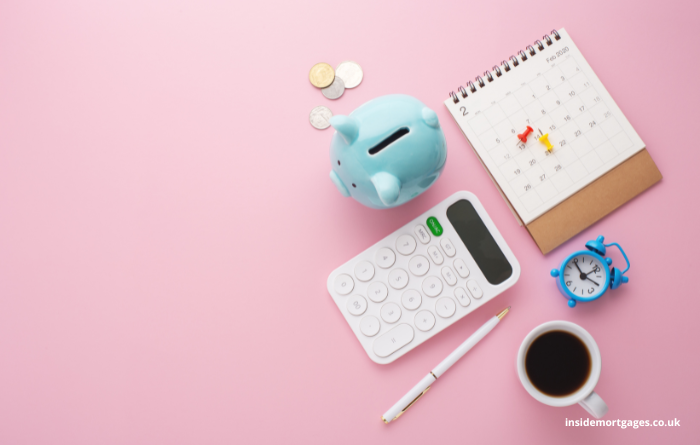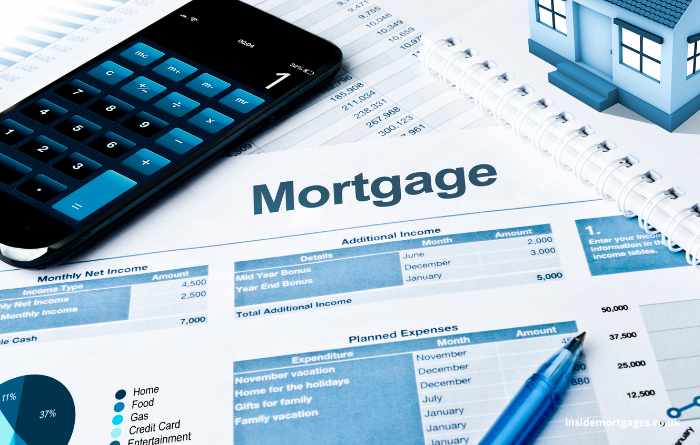How To Save For A Mortgage – 7 easy tips
If you aspire to own your own home one day, then it’s likely that you will need a mortgage. As first time buyers, saving enough money for a house deposit is the first step in getting a mortgage and knowing how to save for a mortgage can feel like a daunting task, but here are 7 tips to help you along the way.
- Figure out how much you need to save for your cash deposit
- Set up a savings plan, keep it realistic
- Review your budget and make cuts where necessary
- Open a high-yield savings account or ISA
- Look at easy ways to make extra money
- Stay disciplined and consistent with your savings goals
- Consider the type of mortgage you want or can afford
With property prices rising all the time, deciding to buy a home is a big one. Saving for a mortgage can feel like an uphill battle but there are lots of ways to make the process easier on yourself. Read on for simple ways to get started.
Figure Out How Much You Need to Save
The first step in saving for a mortgage is to figure out how much you need to save. This will vary depending on the price of the home you’re looking to buy and the type of mortgage you’re getting, but typically, you’ll need to have saved up at least 5% of the purchase price of the home.
For example, if you’re looking to buy a house that costs £250,000, then you should expect to save a minimum of £12,500 for a 5% deposit, plus a further £3000 for conveyancing fees, mortgage set-up fees, and surveying fees.
Whilst 5% is generally the smallest deposit you will need, there are some mortgage lenders and government schemes that allow you to have an even smaller deposit. To qualify, for a small deposit mortgage or government loan, you will often need to ask a family member with good credit history to act as a mortgage guarantor.
The amount of deposit that you will need to save up will depend on the level of savings that you already have, if you have any friends or family that are willing to lend you a proportion of your deposit, and also the house prices in the area that you would like to buy.
Set Up a Savings Plan

Once you know how much you need to save for a deposit, it’s time to set up a savings plan. To do this, you will need to know how much you can afford to save each month and divide the total amount you need to save by your monthly savings allowance.
For example, using the figures above, if you were trying to save £12,500, and could afford to save £200 a month towards this, it would take you 63 months, which is just over five years to reach your deposit amount.
If you have a regular income, setting up a standing order to go directly from your current account into a savings account when you get paid is an easy way to make sure you’re consistently saving. This automated approach also ensures you don’t forget to put aside some savings each month. Even if your income varies, you can adjust your standing order to reflect what you can afford to save.
Make a Budget and Stick to It
Making a budget is key to successful saving and understanding how and why you are spending your money.
You may even decide that now you know how long it will take you to save the amount you need, you want to try and speed up your savings projection by reducing any unnecessary spending. This would mean that you can allocate more to your savings pot each month and reduce the time it will take you to save what you need. If you use a mobile banking app, most now have budgeting options to use and can help you to easily categorise your spending habits.
Having a budget will allow you to categorise your spending into groups such as ‘food shopping’, ‘monthly rent’, ‘savings plan’ ‘gifts’, personal care & medical expenses’, eating out, and leisure time and you can easily adjust your budgets for each area up or down depending on your personal preference and how much you can actually afford to spend on each type of expense.
Another way to budget is to withdraw money and put it into envelopes. Seeing the cash leaving your wallet is often harder to do than tapping a debit or credit card.
Cut Expenses Where You Can
There are certain outgoings that are non-negotiable and out of your control like rent and energy bills, but things like toiletries, finding cheaper mobile phone plans, switching to bills to cheaper tariffs, food costs and eating out can all vary enormously depending on your habits. These are the easy wins when it comes to finding ways to cut spending.
If you find that you’re not able to save as much as you’d like each month, take a close look at your bank statements and budget to see where you can cut expenses. Even small changes, like cutting back on eating out or brewing your coffee at home, can free up extra cash that you can put towards savings.
By taking the time to review your existing expenses in a typical month, you can see exactly where your money is going. You may discover direct debits for subscriptions that you had forgotten about, and realise that your daily takeaway coffee adds up to over £80 a month!
Seeing these things in black and white can help you to adjust your day to say spending to help you to meet your long-term saving goals.
Open A High-Interest Savings Account Or ISA
One of the best ways to boost your mortgage deposit savings is with ‘free money’! Look out for instant access savings account options and fixed-term savings accounts that pay the best interest rates and you can enjoy free money top-ups as you earn more interest without having to lift a finger.
You can also have one cash ISA each year which allows you to save up to £20,000 a year tax-free and earn £1000 interest tax-free for basic rate taxpayers. A Lifetime ISA (LISA) can be used to save up to £4,000 a year towards your first home or retirement. The best bit about it is the government adds a cash bonus of up to £1,000 a year on top depending on the amount you have saved. These types of government bonus schemes have helped millions of people on their way to securing a mortgage deal for home ownership.
Be aware though that some of the best interest rate savings accounts will require you to lock your savings away for a fixed period, usually a minimum of 12 months. This means that if you’re at the start of your mortgage saving journey, this could be a good idea to maximise your savings, but if you’re likely to need to access your cash in the short term, then you will be better off finding the best easy-access savings account that you can. Take a look at the best rates available on money saving expert website.
Can You Boost Your Earning Potential?
If you have trimmed your spending as much as you can but saving progress is still slow, you may want to consider boosting the amount of money you’re bringing in to build up some spare cash. A side hustle, save the change account, or cash back scheme could be just the thing to keep your savings going in the right direction.
Side hustles are business ideas that you can start on the side, in addition to your regular job. The best ones suit your interests and skills. For example, you could start a blog or podcast about your favourite hobby, launch an online store selling handmade products, start pet sitting, or renting out a spare bedroom. With a little hard work, you can soon be earning extra money and achieve your financial goals.
Cashback sites give you a percentage of the purchase price for items you buy back in the form of cash or a gift card. The amount varies depending on the retailer, but it typically ranges from 1-5%. To get the cash back, you simply need to create an account and then click through to the retailer’s website from the cashback site. Once you make a purchase, the cashback will be credited to your account within a few days. Whilst the amounts are small, if you’re buying things online regularly, the amount can quickly add up.
Finally, saving the change on everyday spending is a great way to boost your savings potential. You can do this in person by adding the change you get for each purchase you make to a money box, and then depositing it in the bank when full. Some bank accounts offer this automatically through their banking apps too. For those that offer it, they will round up your spending to the nearest pound and move the difference to a dedicated savings account. Saving your change is a painless way to start saving money, and it’s a great way to get into the habit of setting aside money each month.
Stay Disciplined And Consistent With Your Savings Goals

It can be difficult to stick to a savings plan, especially when there are unexpected expenses or tempting purchases along the way but discipline and consistency are essential if you want to reach your mortgage savings goals.
Try to make it easier for yourself to save a mortgage deposit by setting a realistic budget and committing to it. By setting up automatic transfers to your savings account or putting money into a separate account that you don’t have easy access to for consistent savings, you can stay consistent. Also, remember to track your savings monthly so you can see how much money saved is adding up. Sometimes seeing your progress is all you need to keep it on track and avoid tempting purchases.
Consider The Type Of Mortgage
When you’re buying a home, the type of mortgage is one of the biggest considerations. Not only do you need to think about how much you can afford, but also how long you’re willing to be committed to making payments.
Shorter terms
Whilst it can be tempting to get on the property ladder with the smallest deposit you can get away with, it could be a false economy when you add on the cost of interest payments that you will pay over the lifetime of a longer mortgage. A shorter mortgage term does mean that you’ll need to have a larger deposit saved, but with the tips outlined above, and if you can be patient enough to save up the biggest deposit that you can, then a shorter mortgage is a great way to save money on monthly payments and build equity in your home faster.
Joint Mortgages
You could also consider a joint mortgage with up to four people as a way to boost the deposit amount that can be saved towards the price of a property and save on paying rent. You will be financially linked to everyone on the mortgage though so you must be able to trust them.
Shared ownership
A shared ownership mortgage is a type of loan where you borrow a portion of the property value and pay rent on the remaining amount to a housing association. The advantage of this arrangement is that it allows you to purchase a home you might not otherwise be able to afford, and will typically have lower interest rates that make them more affordable. Shared ownership isn’t for everybody though, so do you research and talk to a mortgage broker to discuss the best option for you.
When You Have A Deposit
When you have saved a lump sum that is enough for a mortgage deposit to afford the property price that you want to buy, it’s time to speak to a mortgage lender or mortgage broker to discuss the best mortgage for you. Look out for interest free periods and financial products that have fewer interest payments for the loan to get the best deal possible.
Summary
Saving for a mortgage deposit doesn’t have to be difficult, but it can take time. With a little planning and discipline, you can reach your savings goal and we hope you now have some useful ideas on how to save for a mortgage.
To recap, careful budgeting, automated saving, government loans, getting the best interest rates you can on savings accounts, boosting your income where you can, and being patient will all have a positive effect on your ability to save for a mortgage.
Put these tips into action and you’ll be well on your way to exchanging contracts and becoming a homeowner before you know it.

